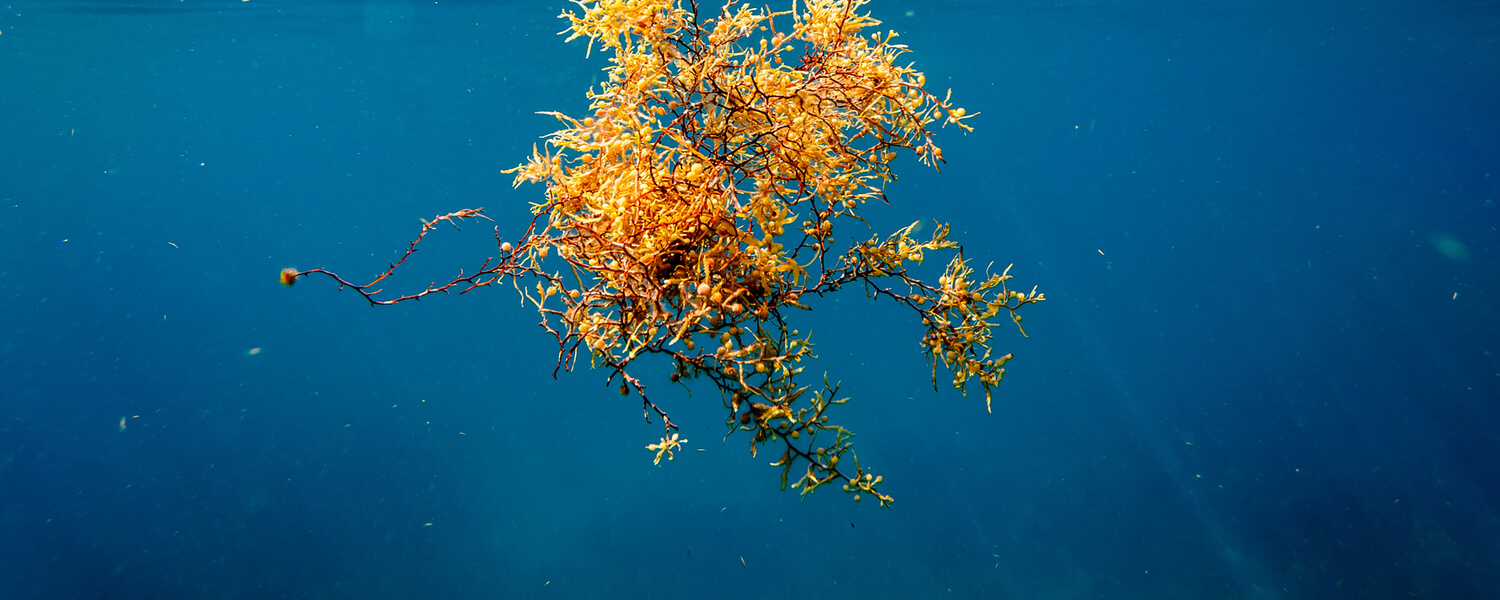
Sargassum
An unusual amount of brown algae called Sargassum has been observed floating in the waters around Roatan during the last months of 2014 and beginning of 2015. In the open water, small but prominent berry-like air bladders called pneumatocysts, keep the Sargassum free floating near the surface so that it can photosynthesize.
The thick masses of Sargassum travel with the wind and currents and provide a home to an amazing diversity of marine species, many of which are not found elsewhere. Sargassum poses little danger to the natural world and has many positive impacts on open-ocean environments. The seaweed provides small invertebrates and fish with shelter and refuge from predators as well as a source of food. Sargassum also provides essential habitat for marine species, such as shrimp, crab, and fish that have adapted specifically to this floating algae. The Sargasso Sea is an area in the North Atlantic Ocean that was named for the abundance of this seaweed. The Sargasso Sea is a spawning site for threatened and endangered eels, as well as the white marlin, porbeagle shark, and mahi-mahi. Humpback whales, commercial fish, such as tuna, and birds also migrate through the Sargasso Sea and depend on it for food
